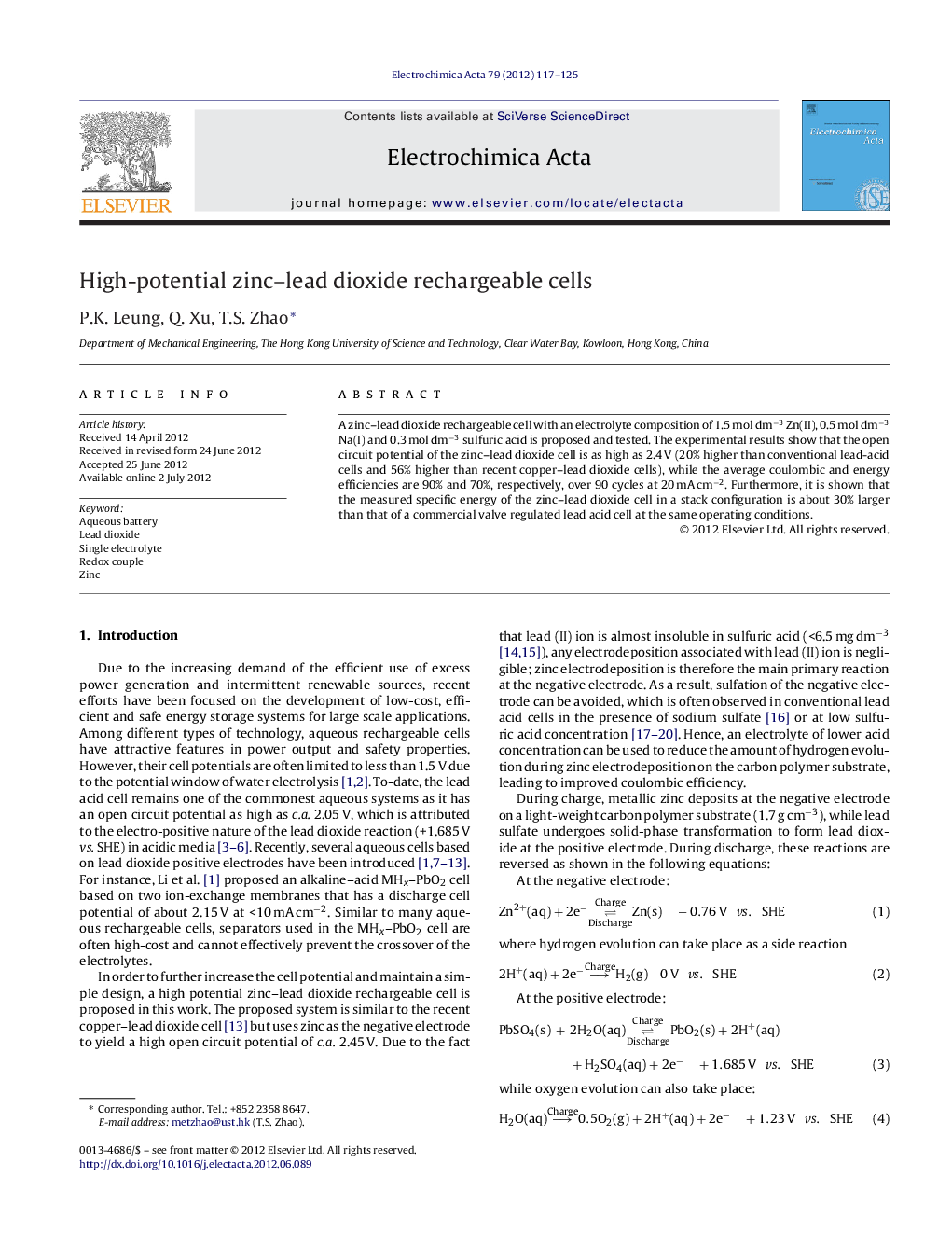| Article ID | Journal | Published Year | Pages | File Type |
|---|---|---|---|---|
| 6618423 | Electrochimica Acta | 2012 | 9 Pages |
Abstract
A zinc-lead dioxide rechargeable cell with an electrolyte composition of 1.5 mol dmâ3 Zn(II), 0.5 mol dmâ3 Na(I) and 0.3 mol dmâ3 sulfuric acid is proposed and tested. The experimental results show that the open circuit potential of the zinc-lead dioxide cell is as high as 2.4 V (20% higher than conventional lead-acid cells and 56% higher than recent copper-lead dioxide cells), while the average coulombic and energy efficiencies are 90% and 70%, respectively, over 90 cycles at 20 mA cmâ2. Furthermore, it is shown that the measured specific energy of the zinc-lead dioxide cell in a stack configuration is about 30% larger than that of a commercial valve regulated lead acid cell at the same operating conditions.
Related Topics
Physical Sciences and Engineering
Chemical Engineering
Chemical Engineering (General)
Authors
P.K. Leung, Q. Xu, T.S. Zhao,
